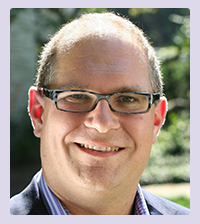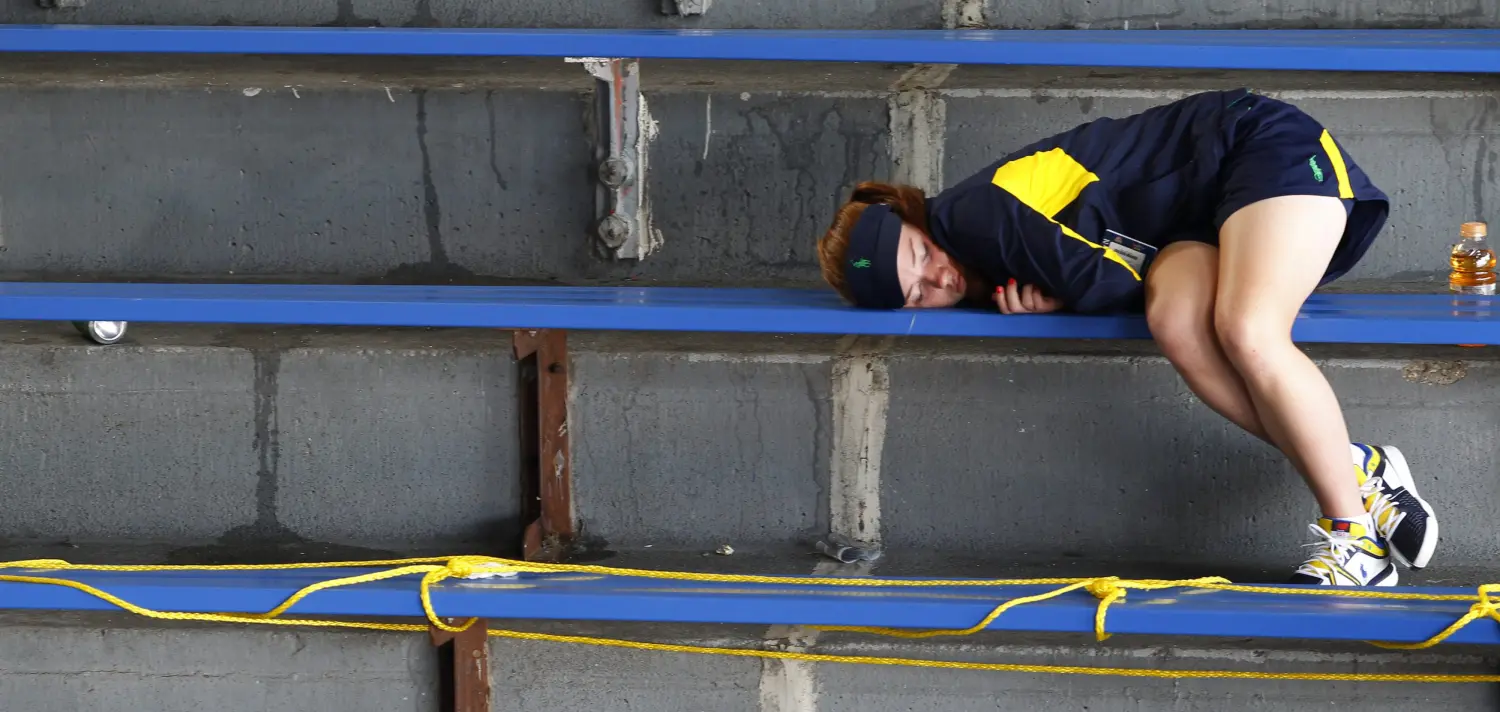Many proposals for improving student performance involve very costly interventions. And while quite a few of these costly interventions surely pass benefit-cost tests, they can be extremely challenging, politically or financially, to implement.
One possible source of “low-hanging fruit” involves changing the ways in which schools are organized. As one example, in a very useful recent policy proposal, Jacob and Rockoff propose three low-cost ways to organize schools to maximize student performance: combining elementary and middle schools into single buildings; optimizing teacher assignment policies; and starting school later in the day for middle and high school students.1 Of Jacob and Rockoff’s proposals, this third idea seems particularly actionable: New buildings need not be built or retrofitted, and the nature of teachers’ jobs would not appreciably change. School districts that start elementary schools later and high schools earlier could potentially swap these schedules without major transportation disruptions. This would permit adolescents to sleep later and therefore arrive at school more ready to learn.
Why start school later for adolescents? The answer rests in our biology. Circadian rhythms influence our sleep patterns, and the degree of light on the outside of our eyelids affects our melatonin secretion and feelings of alertness or fatigue.2 As children enter puberty, their nocturnal melatonin production shifts several hours later than what occurred when they were younger—or when they become adults.3 As a consequence, the American Academy of Pediatrics suggests that adolescents sleep until at least 8:00 am.4 But thanks to a wide range of factors, half of all U.S. high schools start by that time.5 Given this discordance between natural sleep rhythms and school start times for adolescents, it’s no surprise that students lose as much as two hours of sleep per night when they start school in the fall relative to the summer.6
It’s difficult to know exactly how this disconnect between teenagers’ optimal sleep times and school schedules affects their classroom performance because school districts that start high schools later might be better-resourced or otherwise support students better than do those that start high schools earlier in the day. One innovative study looks at U.S. Air Force Academy freshmen cadets who were randomly assigned to earlier or later start times (thanks to having a class in the first period or not) and shows that having a first period class substantially reduces achievement—both for the first period class and for the rest of the day.7 And there exists some case study evidence from Wake County, NC, which changed middle school busing schedules, suggesting that later start times for adolescents improves test scores.8 Other case study evidence from Minneapolis, which shifted start times later by an hour and a half, is more mixed, with increased teacher-assigned grades and other aspects of student well-being but no improvements in ACT scores.9
A major just-published study by Heissel and Norris10 provides the first evidence using large-scale population-level data on this topic.11 One way in which this paper represents a large step forward is that it is the first study, to my knowledge, to investigate this question using data from more than one institution or one school district—thereby substantially enhancing external validity. This new paper also has strong internal validity as well: The authors focus their attention on the relationship between sunlight and sleep, and take advantage of the fact that the state of Florida, where they conduct their research, is divided into two time zones. The sun comes up an hour later, on the clock, in the Eastern Time Zone than a few miles west in the Central Time Zone, but schools only partially account for this difference when setting their start times, so, on average, students in the Central Time Zone in Florida have more than half an hour more sunlight before school starts than do their counterparts in the Eastern Time Zone, and some have an hour or more additional sunlight, depending on when school starts.
One might be concerned that people living in different parts of Florida are somehow different in other ways as well, and Heissel and Norris are able to deal with this concern by concentrating on students who moved between time zones, while remaining in the northern part of Florida (typically called the Panhandle). Some students moved between the Eastern Time Zone and the Central Time Zone, thereby gaining extra sunlight in the morning before school, while others moved from the Central Time Zone to the Eastern Time Zone, thereby losing some sunlight before school starts. Their strategy, therefore, is to compare the same students’ test performance before versus after their cross-time zone moves. The authors found that people making these eastward and westward moves in the Florida Panhandle were similar across a large range of characteristics, and tended to follow similar over-time test score trends prior to their moves.
What happens when children get an extra hour of sunlight before starting school? (The authors estimate the effect of each additional minute of pre-school sunlight, and I’m presenting the effects of a 60 minute difference for ease of explication.) If they are young, math scores are barely affected—the estimated score improvement is just one percent of a standard deviation—but reading scores increase by six percent of a standard deviation. But once they reach puberty (approximately at age 11 for girls and age 13 for boys) math scores improve by eight percent of a standard deviation and reading score improvements remain at six percent of a standard deviation. The increased amounts of sunlight prior to school start only modestly reduces absence rates—and more for young children than for teenagers—indicating that these improved student outcomes are probably due to increased alertness, rather than to more time in school.
The post-adolescent math performance bumps associated with more daylight prior to school are about the same for boys and girls alike. They are present for both white and non-white students (with slightly higher estimated effects for non-white students). They are present for both relatively affluent and relatively disadvantaged students (with somewhat higher estimated effects for students not eligible for free or reduced-price lunches). In sum, it appears that more daylight before school starts helps a wide range of adolescents better learn math. Moreover, the authors show that the benefits occur immediately and persist for years.
Do these results reflect the cumulative effect of more sunlight over the course of the entire school year, or do they just reflect alertness on the day of the exam? The answer to this question has important implications for whether it makes sense to shift the school day back in general for adolescents, or whether this is really just a test-day phenomenon. To address this question, Heissel and Norris take advantage of the fact that Florida changed the timing of its high-stakes testing from year to year and the dates of the start of daylight savings time changed from year to year. As a consequence, in some years the high-stakes testing took place just before the start of daylight savings time, when pre-school daylight was highest; in other years, the high-stakes testing took place just after the start of daylight savings time, when pre-school daylight was nearly an hour less; and in still other years, the high-stakes testing took place a month after the start of daylight savings time, when pre-school daylight was somewhere in the middle.
When the authors make this comparison, they find that the amount of sunlight on the day of the test can explain a portion of the reading results—recall that they find that more sunlight in general helps pre-pubescent and adolescent children approximately equally in reading as well—but it doesn’t explain much of the math results. Most of the boost in adolescent test performance that we observe when students have more daylight in the morning is due not to the amount of daylight before school on days when children take tests, but rather to the amount of daylight before school experienced across the school year. Daylight before school apparently boosts cumulative learning for adolescents—and not just test-day alertness.
What do these findings imply for optimal school schedules—at least, from the point of view of maximizing student math and reading achievement? Heissel and Norris carried out a thought exercise in which, for every Florida panhandle school district, they assigned the school district’s earliest start times to elementary students, the middle start times to middle school students, and the latest start times to high school students. This calculation would move elementary school start times 22 minutes earlier, middle school start times 13 minutes earlier, and high school start times 44 minutes later, on average.
Heissel and Norris estimate that making these scheduling switches would raise average math performance by six percent of a standard deviation and average reading performance by four percent of a standard deviation. While not earth-shattering performance changes, they are extremely impressive for a policy change that would cost school districts little to implement – and are approximately one-fourth the difference between an excellent-performing school and an average-performing school. (Recall, also, that most parts of the United States have less daylight between September and March than Florida does!)
There are, of course, potential costs associated with this type of schedule change. Parents might be more comfortable with high schoolers traveling to school in the dark than they are with elementary school-aged children doing the same. Starting elementary school relatively early could have implications for parents’ after-school child care arrangements as well. High schoolers have more after-school activities, sports, and the like, and later school start times might put the squeeze on these types of activities. For instance, later school start times might mean that more students participating in after-school activities will arrive home after dark, which might also cause concern. And given a school start time, at least one study shows that students learn more in the morning than they do in the afternoon12 (though a later start time can put adolescents in a better position to learn).
Nevertheless, there are few “quick wins” in education when it comes to boosting learning at a very low cost, and paying attention to—and scheduling school start times in line with—human biology seems to be one of them.
The author did not receive financial support from any firm or person with a financial or political interest in this article. He is currently not an officer, director, or board member of any organization with an interest in this article.
-
Footnotes
- Brian Jacob and Jonah Rockoff, “Organizing Schools to Improve Student Achievement: Start Times, Grade Configurations, and Teacher Assignments,” Hamilton Project Discussion Paper 2011-08, September 2011.
- See, e.g., Josephine Arendt, “Melatonin, Circadian Rhythms, and Sleep,” New England Journal of Medicine, 2000.
- See, e.g., Mary Carskadon, Christine Acebo, and Oskar Jenni, “Regulation of Adolescent Sleep: Implications for Behavior,” Annals of the New York Academy of Science, 2004.
- American Academy of Pediatrics, Adolescent Sleep Working Group and Committee on Adolescence, “School Start Times for Adolescents,” Pediatrics, 2014.
- National Center for Education Statistics, “Average Start Time for Public High Schools and Percentage Distribution of Start Times in Public High Schools, by Selected School Characteristics,” 2012.
- Martha Hansen, Imke Janssen, Adam Schiff, Phyllis Zee, and Margarita Dubocovich, “The Impact of School Daily Schedule on Adolescent Sleep,” Pediatrics, 2005.
- Scott Carrell, Teny Maghakian, and James West, “A’s from Zzzz’s? The Causal Effect of School Start Time on the Academic Achievement of Adolescents,” American Economic Journal: Economic Policy, 2011.
- Finley Edwards, “Early to Rise? The Effect of Daily Start Times on Academic Performance,” Economics of Education Review, 2012.
- For instance, Peter Hinrichs, “When the Bell Tolls: The Effects of School Starting Times on Academic Achievement,” Education Finance and Policy, 2011, found no benefits in terms of ACT scores. Kyla Wahlstrom, “Changing Times: Findings from the First Longitudinal Study of Later High School Start Times,” NASSP Bulletin, 2002, found improvements in other student outcomes.
- Jennifer Heissel and Samuel Norris, “Rise and Shine: The Effect of School Start Times on Academic Performance from Childhood through Puberty,” Journal of Human Resources, published online before print, April 19, 2017.
- In the interest of full disclosure, I was Heissel’s Ph.D. dissertation adviser and I am also editor-in-chief of the Journal of Human Resources, where this paper was published. However, the paper was handled from start to finish by a different Coeditor, and I had no influence over the publication process.
- Nolan Pope, “How the Time of Day Affects Productivity: Evidence from School Schedules,” Review of Economics and Statistics, 2016.




